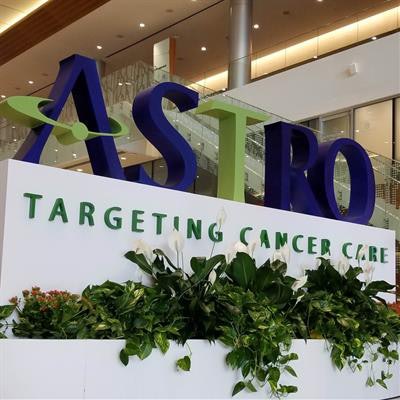
SAN ANTONIO - Despite past concerns, stereotactic body radiation therapy (SBRT) delivered in a smaller number of sessions at a higher radiation dose works well for men with less risky forms of prostate cancer, according to a study presented on Monday at the American Society for Radiation Oncology (ASTRO) meeting.
SBRT has been around since 2000, but its use has been somewhat limited in patients with less-aggressive forms of cancer because it delivers larger radiation doses per fraction of treatment. Known as fractionation, the technique can be more effective in treating cancer but also raises concerns about late toxicity to patients.
SBRT holds particular promise for prostate cancer because the disease has been shown to be particularly sensitive to high doses of radiation. With SBRT hypofractionation, a course of treatment could be reduced from 39 to 45 treatments over eight to nine weeks to four to five treatments over 1.5 weeks.
To further investigate SBRT hypofractionation for prostate cancer, a research team led by Dr. Amar Kishan from the University of California, Los Angeles conducted a multicenter study that included 2,142 men with low- and intermediate-risk prostate cancer at multiple institutions from 2000 to 2012. The study population included some of the first men treated with SBRT when the technique became available in 2000, according to Kishan.
In all, 55.3% of the men had low-risk disease, 32.3% had favorable intermediate-risk disease, and 12.4% had intermediate-risk disease that was classified as unfavorable because they had multiple risk factors. The mean patient age was 67.9 years. Most of the patients (47.3%) received SBRT daily or every other day (47.4%), while 5.3% were treated once a week. Radiation doses ranged from 33.5 Gy to 40 Gy delivered in four or five fractions.
The researchers measured the effectiveness of SBRT with several patient outcomes, including overall survival, biochemical recurrence as indicated by rising prostate-specific antigen (PSA) levels, and the incidence of distant metastases. At ASTRO, Kishan presented numbers after seven years of follow-up; in general, the "extreme fractionation" schedule of SBRT in the study performed well in this group of patients.
| SBRT for low- and intermediate-risk prostate cancer | |
| Patients experiencing recurrence | 6% |
| Patients with distant metastasis | 0.6% |
| Deaths from prostate cancer | 0% |
| Low-risk patients | |
| Biochemical recurrence at 7 years | 4.5% |
| Overall survival | 91.4% |
| Distant metastasis | 0.1% |
| Favorable intermediate-risk patients | |
| Biochemical recurrence at 7 years | 8.6% |
| Overall survival | 93.7% |
| Distant metastasis | 1.7% |
| Unfavorable intermediate-risk patients | |
| Biochemical recurrence at 7 years | 14.9% |
| Overall survival | 86.5% |
| Distant metastasis | 3.0% |
What about toxicities from the more aggressive hypofractionated treatment schedule? Kishan noted that while his study did not specifically compare toxicity, the rates compared favorably with what's been reported in the literature with other modalities.
In the end, the researchers concluded that the study should put to rest concerns about the suitability of SBRT hypofractionation for men with lower-risk prostate cancer.
"We can conclude that the long-term safety and efficacy profile of SBRT compares favorably with other established radiotherapy modalities for low- and intermediate-risk disease," Kishan said. "We can't say that this should be the standard of care, but we can certainly say that this should be a standard-of-care option for low- and intermediate-risk prostate cancer.


















